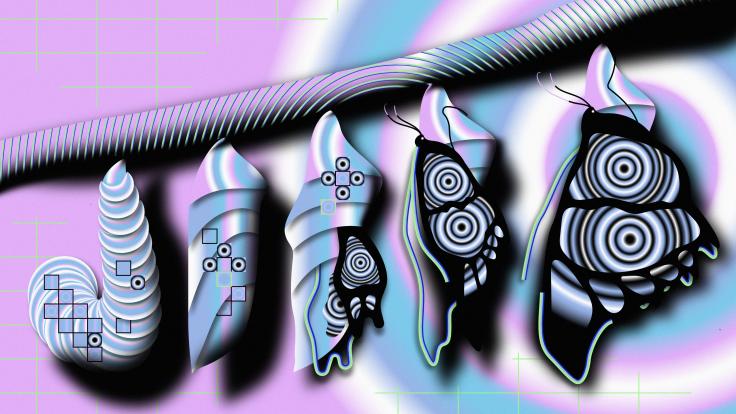
Scientists prepare to launch ANITA, a balloon-borne radio telescope that scientists used to search for cosmic rays and magnetic monopoles. Image courtesy of University of Hawaii Manoa.
The Higgs boson may be the hot target for both the Tevatron and the LHC, but it's far from the only particle that physicists would like to find. There are gravitons, tachyons and dark matter particles, which may or may not be linked to supersymmetric partner particles (and oh, by the way, physicists would like to find those, too).
And there are monopoles. Of all the empty cages in the particle zoo, none is so bereft of its inhabitants as the monopole exhibit. Monopoles are hypothetical particles that display an odd form of magnetism, having either a north pole or a south pole, but not both.
In a talk presented at the Dirac Centennial Symposium in early December of 2002, the prominent string theorist Joseph Polchinski described the existence of monopoles as "one of the safest bets that one can make about physics not yet seen."
But not one experiment has irrefutably demonstrated that monopoles exist.
Indeed, this year’s reports seem to worsen the odds. This includes findings from the Antarctic Impulsive Transient Antenna, aka ANITA—a balloon-borne radio telescope that gathered data while floating in circles around the South Pole—and the Antarctic Muon And Neutrino Detection Array, aka AMANDA—another neutrino detector buried in the Antarctic ice. These two detectors searched for magnetic monopoles by detecting the Cherenkov radiation resulting from their passing—either directly or from showers of particles left behind by a monopole instigating decay in another cosmic particle. The technique worked when the instruments looked for neutrinos. ANITA even found particle showers induced by cosmic ray events, but no monopoles.
Monopoles first received theoretical support when the brilliant theoretical physicist Paul Dirac showed mathematically that one possible reason for the quantization of the electric charge (in other words, why electric charge only occurs in integer amounts) is the existence of a complementary magnetic particle with a quantized magnetic charge. This put monopoles on fairly firm footing as far as quantum electrodynamics was concerned. When magnetic monopoles began popping up in grand unification theories as a consequence of the dissociation of electromagnetism, the strong force and the weak force, they gained even more adherents among theorists.
Although scientists have an idea what they would like monopoles to do, they’re not sure how to describe them. This makes them more difficult to hunt. Predictions for the mass of a magnetic monopole range from 105 to 1018 GeV. Predictions for monopole velocities range from a thousandth of the speed of light to three-quarters the speed of light or higher.
Probably the simplest way to find a monopole is to wait for one to pass through a superconducting ring. In such an experiment, an ordinary magnetic particle with two poles would induce a current in one direction as the first pole dropped through and then a second current in the opposite direction as the other pole dropped through, thus canceling the current out. But a magnetic monopole would induce only one current, which would not be canceled out. Indeed, this technique may have found a magnetic monopole—once—the so-called "Valentine's Day Monopole," on February 14, 1982. But since the detector never saw another one, it's been written off as a tantalizing but statistically insignificant tease. So the search for monopoles continues through experiments like the Monopole and Exotics Detector, or MoEDAL experiment, at CERN.
Polchinski's "safe bet" quote is a favorite of monopole enthusiasts. What doesn't get quoted as often is his closing statement on the matter: "But we must continue to hope that we will be lucky, or unexpectedly clever, some day."






